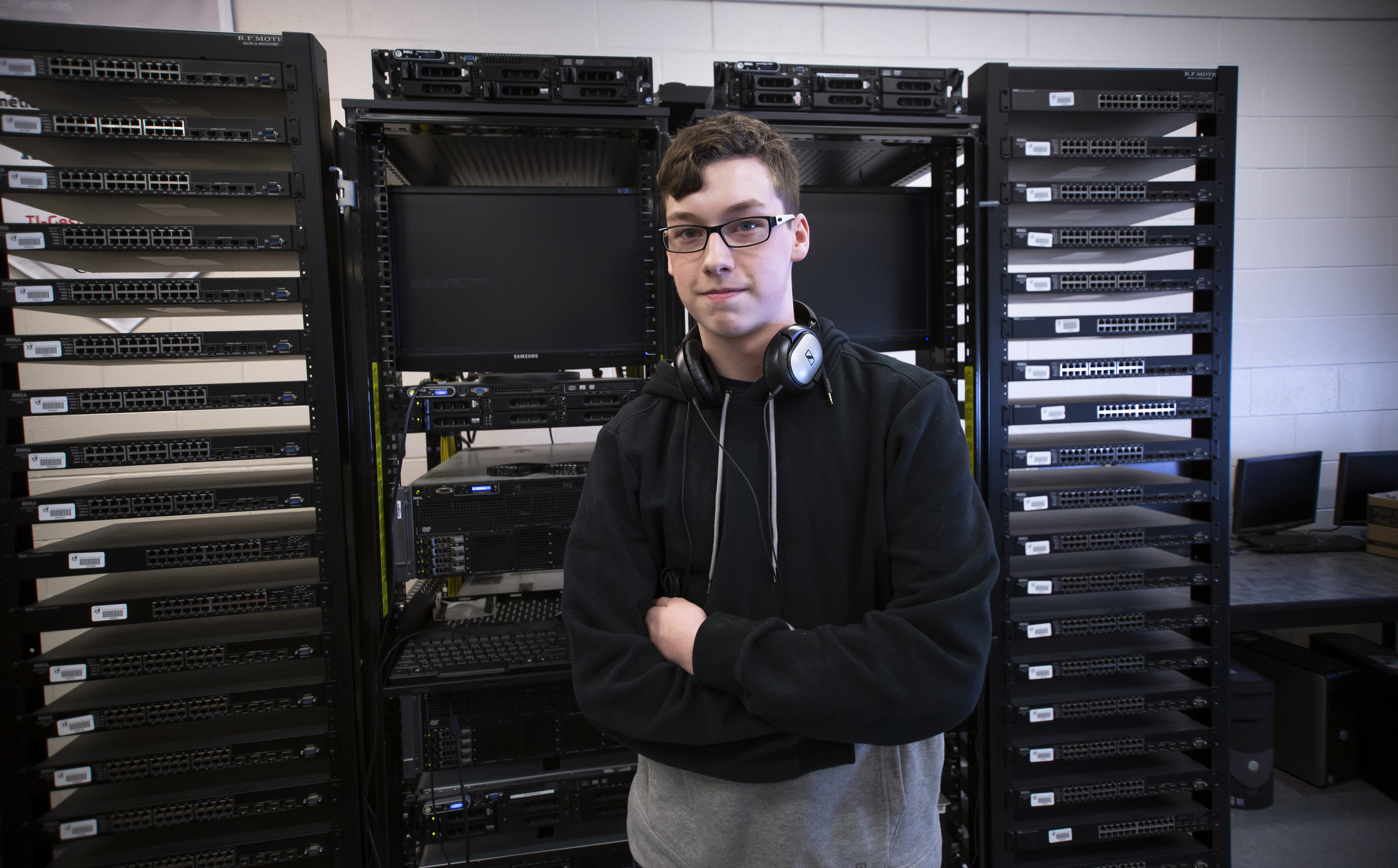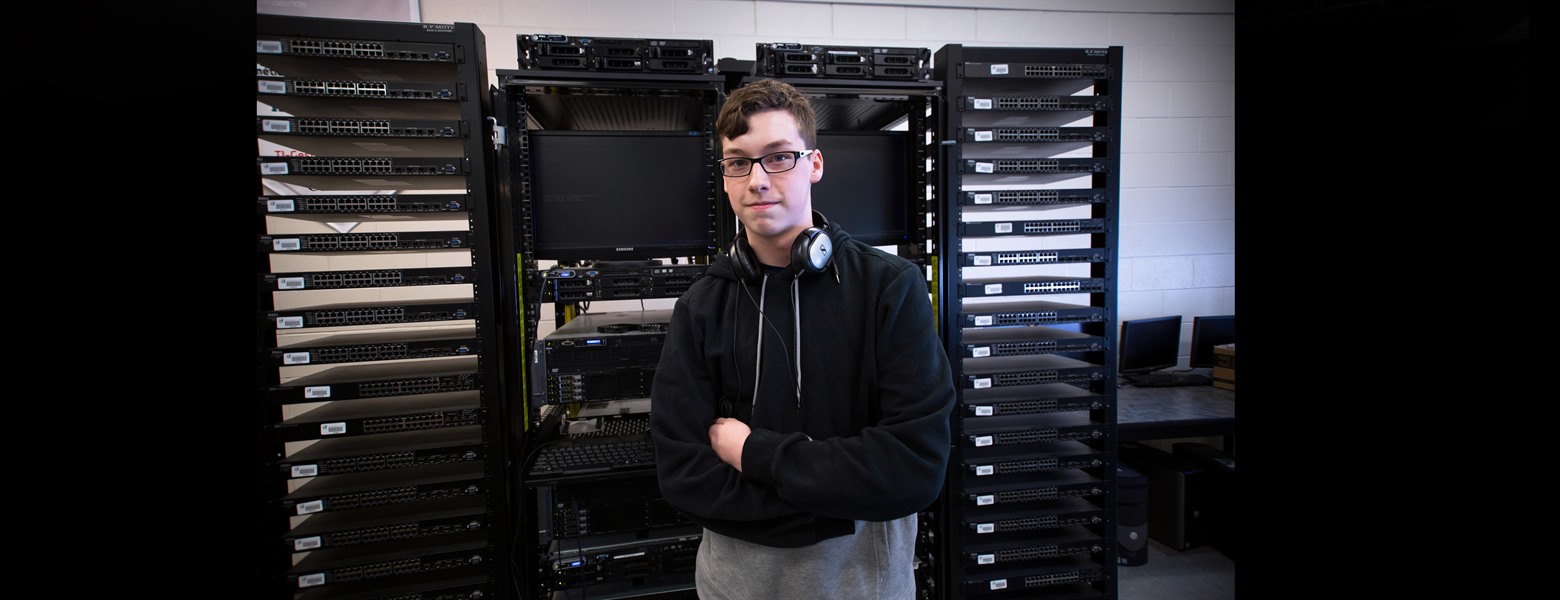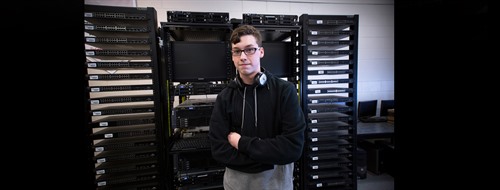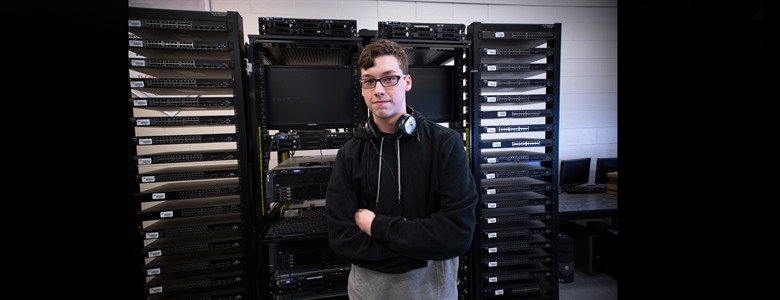Sisler lends its processing power to cancer research
February 8, 2021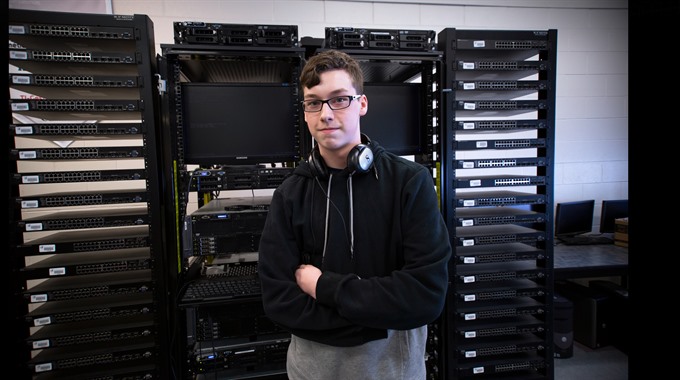
When major research projects require processing power to crunch large amounts of data, they often turn to grid computing. Organizations and individuals with large servers can donate a portion of their computing power to help process data.
Sisler High School is currently ranked second in the world when it comes to secondary schools donating computing power to research centres, as well as ranking in the top seven Canadian donators.
In once such project, Grade 10 student Dylan Bucci configured several Dell servers to communicate with the IBM World Community Grid and provide much-needed processing power to the Krembil Research Institute in Toronto.
“It puts the machines to good use,” said Dylan, who reconfigured 12 high-end enterprise servers for the project.
The servers had all been donated to Sisler in the past several years.
“We had the 12 servers set up here for the past several years, doing various tasks at the school,” said Network and Cybersecurity teacher Robert Esposito. “Dylan and I had some conversations about it, shared some information and found some common ground for a new project.”
As it turns out, Dylan’s father was using some of his home CPUs processing power for a similar grid project.
“My dad ran a program called SETI (Search for Extraterrestrial Intelligence) at home,” Dylan said. “It scans radio waves that come into our atmosphere, which are collected by satellites to see if there are any coherent signals.”
Mr. Esposito suggested the possibility of using the IBM World Community Grid for a similar project in support of medical research.
Dylan looked at the variety of research projects currently on the World Community Grid; they ran the gamut from researching cures to the Zika virus to using stomach bacteria for the treatment of various diseases. But he ultimately chose the cancer project after seeing relatives and family friends deal with the disease; in particular, Dylan was drawn to the possibility of providing timelier cancer treatments. The Krembil Research Institute’s project is studying the mapping of cancer markers to improve and personalize cancer treatment.
“This project looks through the human DNA and certain chromosomes that are usually present when certain people get cancers,” Dylan said. “They’re looking at possibly preventing or catching cancers earlier than they normally do. It’s just something I wanted to help out with…cancer is so common now.”
Dylan said the project was a welcome challenge.
“I did have to learn a bit as went along, but I was determined. All I really had to do was learn the program we’re using to administer the servers (vCenter)…now I know the program like the back of my hand.”
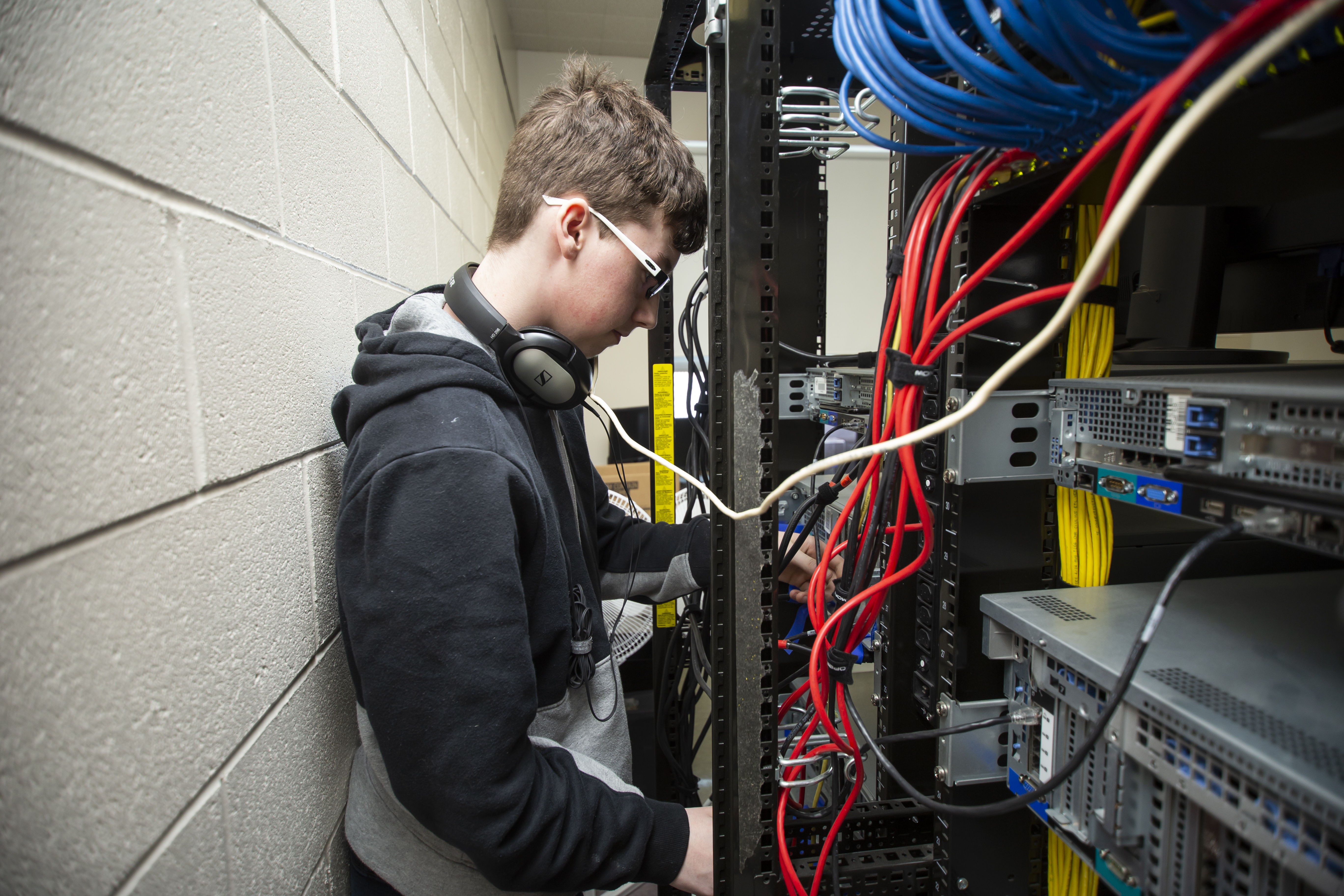
Dylan was cited on the IBM World Community Grid twitter account (@WCGrid) for his contributions to the project, which are notable due to the sheer amount of processing power donated.
While today’s youth is sometimes chastised for its obsession with technology, Dylan said projects like this are a perfect example of how those skillsets can be put to good use.
“Technology can be both a tool and a toy…but seeing it used like this has only gotten me more interested in tech,” said Dylan, who added that he one day hopes to be working in the tech sector.
Mr. Esposito said the project was indicative of the caliber of work Sisler students were capable of.
“The skillset that Dylan has used here just to set up all the servers, setting up each server with its own Microsoft operating system and the VMware environment around it…those skills are no different than what you’d be doing in the industry. We’re not running a modified educational version of a system…this is a full-fledged system that a business would use. It validates everything we do in this program. We have students that can do great things.”
Dylan is also hoping to enlist other Sisler and WSD students to donate some of their processing power for similar research projects.
“I’m proud of what we’ve accomplished—we’ve done over 14 years of cancer research in a month,” Dylan said.
